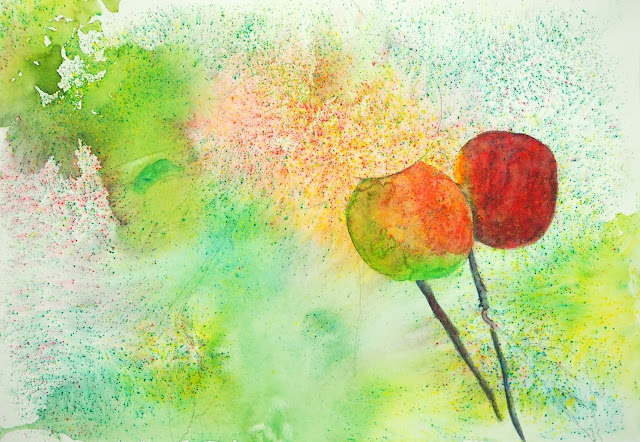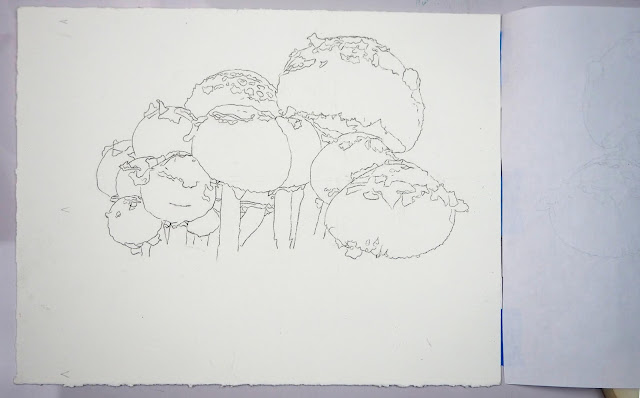This is the one I demonstrated during class. I wet the paper (it was very wet), dropped in warm and cool yellow, and then added salt while it was still wet and shiny, but not puddled.
This is an alternate option for mixed media. I did this before class so it would be dry during class. This could be called everything but the kitchen sink. I wet the paper (very wet), dropped in color ( warm and cool yellow, warm and cool red, purple blue and green blue). While it was still wet I used 'sanding' to add watercolor pencil texture. Then, while it was still wet but not puddled, I added salt. I set it aside to do its thing overnight. The photo below shows how it looks after some work has been done.
This is how this looked at the end of class. I showed how to add light back into the piece - using as eraser, lifting the paint with a stiff flat brush (I used the small eradicator I ordered from Rosemary & Co., a British company), and using the white watercolor pencil from the Faber Castell Albrecht Durer set (by shading with the white and wetting it and also by using a wet brush to get the white from the tip of the pencil). The process for this one is to re-establish the white/light, add darks, fix any issues, and then add details.
This is the one I did before class so that it would be dry for the next step. I wet the paper (it was very wet), dropped in warm and cool yellow, and then added salt while it was still wet and shiny, but not puddled. The green on the left is from me grabbing the paper with wet paint on my thumb, ooppss. The photo below shows how it looks after some work has been done.
This is what this on looked like at the end of class. This has had a layer on the bottom of color (reds) on dampened paper, sanding with watercolor pencil, and a little more salt.
The top has had both blues (green and purple blue) on dampened paper and the edges were gently blended. Later I added a warm red glaze to knock back the bright color. I added some blue in background spaces between the mushrooms to connect the top and bottom.
I added layers of light color on the mushroom with both watercolor pencils and watercolor. I also started adding some medium values and a few darks. You can do this whole piece using watercolor only, watercolor pencils only, or a combination of both.
We will do the finishing touches next week with colored pencils.





















